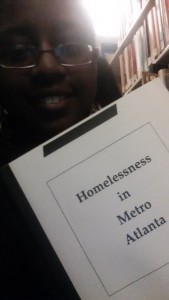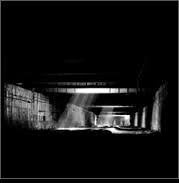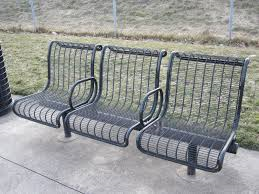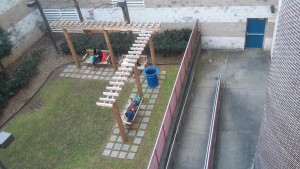Annotated Bibliography 2 (unit one)
Mathiowetz, Dianne. “Atlanta Remembers Troy Davis on Sept. 21.” Text. Workers World. N.p., 13 Sept. 2012. Web. 3 Feb. 2016.
Dianne Mathiowetz, Co-Coodinator and Representative of IAC (International Action Center) in Georgia Peace & Justice Coalition, a network for organizations and individuals that advocate for global justice and peace, in her article, “Atlanta Remembers Troy Davis on Sept. 21” gives insight on the case of Troy Anthony Davis in 2011 and its effect on the community around him and in his hometown. She explains that he was given the death sentence for a crime that he did not commit. Then she gives information on the protests and rallies conducted in honor of Troy Davis. Mathiowetz, continues with scheduled dates for a protest and march during that time. She also provided examples of how Davis was honored, like changing Woodruff Park’s name to Troy Davis Park. This article was written with the purpose of raising awareness to social injustices in Georgia, specifically Atlanta, and to encourage the members of this community was to join the cause and is a useful source to someone seeking information on the community’s involvement with social justice issues.
Annotated Bibliography 1 (Unit One)
International Business, Times. “Occupy Atlanta Protesters Ignore Police Order to Leave Woodruff Park.” International Business Times Nov. 0010: Regional Business News. Web. 2 Feb. 2016.
International Business Times, an online news publication, reports in their article, “Occupy Atlanta Protesters Ignore Police Order to Leave Woodruff Park” that “Several hundred protesters [occupied] Woodruff Park in Atlanta…in the latest outgrowth of a national movement that began [the previous month] with Occupy Wall Street.” They provide statements from the protest representatives involved and their reasons for protest, while explaining how they relate to historical views of Martin Luther King Jr in his “Letter from a Birmingham Jail” in 1963.” They also shed light on similar protests that occur in other cities, such as Boston, Chicago, and Los Angeles. The intended audience for this article would be someone interested in historical occurrences of civil rights activism in Atlanta and it would be a useful source for them to use as an example of this.
Annotated Bibliography 3 (unit one)
Reitzes, Donald C. et al. “Home or Office? The Homeless and Atlanta’s Downtown Park.” Sociological Focus 48.1 (2015): 28–48. Web. 4 Feb. 2016.
In the article “Home or Office? The Homeless and Atlanta’s Downtown Park”, authors Donald C. Reitzes, Timothy J. Crimmins, Johanna Yarbrough, and Josie Parker, of Georgia State University completed a case study which claims that ” as a general use space, the homeless did not identify the park as “home,” but did use it for their private purposes.” This claim is supported with research conducted by the authors on how the space is used by homeless people, based on symbolism, special characteristics of the area, activities they do in the park and the general use of the park. The purpose of this article is to provide information on how homeless people take the park and use it as a resource to complete their everyday activities. This article would be a useful source for other scholars doing research on the living conditions of homeless people in Atlanta.
The Reality of Homelessness: A Summary of Nersessova’s Article
This article discusses Margaret Morton’s book “The Tunnel: The Underground Homeless of New York City” and the photographs of the homes built by the homeless people in the city. Nersessova does this using the views of the Situationalist International theory from Karl Marx.
In the beginning of the article Neressova defines homelessness as being without a stable home. The term stable is important because she explains that the people we call homeless have built homes for themselves, but they are not stable. She also talks about the designs of some of these homes they have created and what they represent. She said that the way each home is created is significant to the person living there because “identity is closely tied to one’s place of home” and a result of them always moving is that their identity is “consistently fragile”. The fact that they continue to rebuild theses homes each type they move, shows that their “creative response to instability”. A common issue homeless people faced was the city destroying their homes and closing off the tunnels where they were built, taking away their identity. This often makes them vulnerable and she explains that this represents the “universal relationship between space and the splintered identity”. They space they have determines how they will build their homes and the homes they build become their identity. This changes when they have to change the space.
Nersessova, then talks about Morton’s photography of the urban areas in New York and the role they play in a “society of the spectacle”. She discusses this using the views of the Situationist International (SI) which acknowledges the difference between the “society of the spectacle” and the “reality of homelessness”. According to the SI, people use the media to decide what they will consume and how they understand themselves.
In Morton’s book, she discusses the significance of the tunnels with some of the people she interviewed that lived in the tunnels. A common thing they said was that they felt safe in the tunnels, as odd as it may seem, even though it looked like a dangerous place. They didn’t have worry about getting robbed or attacked, because they felt like no one want to risk coming into the dark tunnel. They also liked the tunnels and the underground part of the city because there was less traffic, which made it safer for them.
The photographs in Morton’s book gives a visual of what is the reality of homeless people’s lives. It provides an inside look at how they actually live and instead of how we, as a society, assume they do. It also gives the views of outsiders looking in on their lives. They are afraid of the tunnels because they fear the unknown and that is a product of our society.
Architectural Exclusion: A Summary of Schindler’s Article
Architectural exclusion is when man-made, built environments are designed to exclude certain types or groups of people. Schindler gives several examples of this throughout the article. One of the examples of this would be exclusion through the subway system. Often, rich communities in Atlanta are against allowing MARTA to have stops in their neighborhoods, because they know that this will encourage the poor and people of color to come there. It will also stop them from getting jobs in the area because they will not have a ride to work. Schindler also talks about how white residents in a suburban community once had a road closed because it gave a nearby, black neighborhood access to their area. They even covered it up by saying that closing the road would help reduce traffic.
According to the N.Y. Times article “Where has the Northern State Gone?” written by Philip Lutz, Robert Moses, known as the “Master Builder” of New York, wanted to build “low-hanging overpasses on the Long Island parkways that led to Jones beach…so that buses could not pass under them.” Schindler then explains that this affected the people of color and poor people because they were that ones that rode the bus the most. This means they were excluded from going to Jones Beach.
Architectural exclusion also, serves as a regulator, keeping people of color and poor people separated from everyone else. An example of this would be the fact that park benches are designed to have armrests so that homeless people will not sleep comfortably on them. This type of regulation is discreet because to most people, they assume the purpose of the armrests are to divide the benches. Schindler explains that this shows how effective this type of regulation is and how it occurs with no one suspecting it is taking place. Another example Schindler provides is architecture being used to hide neighborhoods from non-residents and to discourage them from entering. They can even be designed to keep the residents in. One way they do this is a residential parking permit requirement. This keeps the resident from wanting to invite guests over, because they know they will have to pay for a guest permit so that their friends can park in the street. The roads of these neighborhoods are often curvy and full of dead ends, which confuses non-residents and makes them not want to enter the area.
There are also regulations in transit, street, and highways that keep visitors out of these communities. Schindler gives an example from Lessig, which says that putting a highway between two neighborhoods prevents them from interacting with each other. Highways were put in the middle of cities to get rid of the low income and black communities. One-way streets are used to keep traffic out of certain areas, mainly the wealthy ones. Bridge exits and highway ramps were used to direct traffic in the direction away from the rich neighborhoods to keep non-residents out. This was very inconvenient for drivers, taking them out of the way to get to where they were trying to go. Some of these communities took matters into their own hands to keep their neighborhoods exclusive. In Darien, Connecticut, they don’t have many street signs because they want to confused visitors and keep them from finding the rich neighborhoods. In Bolinas, California, people would remove the signs telling drivers the location of the city, so that they would not have visitors. Architectural exclusion can easily be overlooked, because it is often covered up by the people designing the environment where it occurs.
Built Environment Observation Activity
|
Objective (Describes experience) |
Subjective (Thoughts, analysis, interpretation) |
| 3 Swings (wooden) | Makes more people want to sit in the area |
| 2-seater swings | Friends have enough room to sit together |
| It is located in a corner space | It’s cozy even though it’s outside |
| Grass | It was muddy |
| Square tiles in the ground near the swings | It would be a good place to put your feet when the grass is muddy after the rain |
| Trees nearby | To provide shade |
| Hooks on the swing poles | Maybe to hang bags (two students that were there used the hooks for that) |
| Bridge connecting Student Center East and Urban Life | — |
| Drain in the ground nearby | Good for when it rains |
| 3 light poles | Useful at night to keep the area well lit |
| Swings held up by chains | So that the swings can hold the weight of two people |
| Smells like grass | Not a good or bad smell |
| Sound of vent blowing | I liked to have some type of noise in the background and not just silence |
| Vents | — |
| 2 students talking | It’s a nice place to talk and relax with friends |
Schindler’s “Architectural Exclusion”
What Does It Mean?
3.) “Architectural regulation is powerful in part because it is unseen’ it allows government to shape our actions without our perceiving that our experience has been deliberately shaped” (1940)
- The reason that architectural exclusion is powerful is because the government is able to control our actions without us being aware that they are doing it.
7.)”…’there is no such thing as a neutral design” (1948)
- Every design is made a certain way for a reason
18.) “..the design of many suburban communities, with their cul-de-sacs and curvy streets, makes them confusing to outsiders who can not see what lies on the other side of the neighborhood. This street layout also gives non-residents fewer reasons to enter the neighborhood in the first place; the multiple dead end streets and cul-de-sacs of a suburban neighborhood often all branch off a single arterial road” (1972).
- The design of cul-de-sacs are used to hide was is the other side of the neighborhood from non-residents and with the purpose of discouraging them from entering by making the streets in it confusing and complicated.
Syllabus Quiz
Questions:
What are the major projects? In a bulleted list, provide links to the project descriptions for each of them.
- Reading Summaries (6) http://spaceplacerhet.pdarrington.net/projects-2/#readingsummaries|0
- Annotated Bibliography (10 annotations) http://spaceplacerhet.pdarrington.net/projects-2/#readingsummaries|0||annotatedbibs|0
- Built Environment Descriptions (3, one each for exterior, interior, and digital) http://spaceplacerhet.pdarrington.net/projects-2/#readingsummaries|0||annotatedbibs|0||bedescriptions|0
- Built Environment Analysis (1) http://spaceplacerhet.pdarrington.net/projects-2/#readingsummaries|0||annotatedbibs|0||bedescriptions|0||beanalysis|0
How will your final grade be calculated?
- The grade is calculated based on the point system. You can earn points for everything you do. there is a minimum of 2500 points to get an A in the class
What is the “submission form” and how do you use it?
- It is the form used for turning in work to receive points
Embed the form below your answer (hint: Google “embed Google form” to find out how).
Embed the course calendar and weekly overview below this question.
Where on the course website can you find an overview of what’s due and the readings for each unit?
- Go to the Syllabus and course info tab and click on unit overview
What is the best way to see an overview of what’s due each week?
- The course calendar
What is the attendance policy?
- You earn 20 points for coming to class and lose 20 points for unexcused absences
What are my office hours, and how do you make an appointment to see me outside of class?
- Tuesdays 9:30-11:30 a.m., and by appointment
How do you earn participation credit? Provide a link to the instructions/guidelines for particiption.
- By doing the major projects, coming to class prepared, and missing only 4 class meeting. Also any other extra work that you do can be submitted for points.
- Participation (link to instructions)
How many points can you earn by participating in or organizing a study group session?
- up to 25 points
How can you be assured of earning an “A” in this course?
- Accruing 2,500 points
What are the minimum requirements for earning a passing grade of “C”?
- If you complete all the major projects, earing at least the minimum amount of points
What do you do if you’re not sure how to document your participation in order to earn points?
- You can request to meet with the instructor




